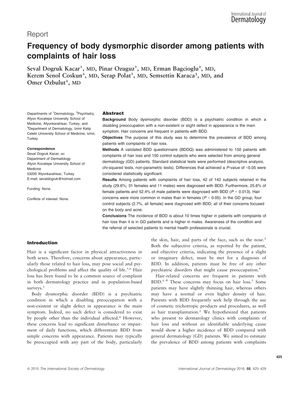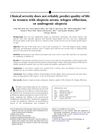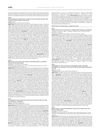Frequency of Body Dysmorphic Disorder Among Patients With Complaints of Hair Loss
June 2015
in “
International Journal of Dermatology
”

TLDR Patients with hair loss are much more likely to have body dysmorphic disorder than general dermatology patients.
In a 2015 study conducted in Turkey, researchers found a significantly higher incidence of body dysmorphic disorder (BDD) among patients with hair loss complaints compared to a control group of general dermatology patients. Out of 142 patients with hair loss retained in the study, 42 (29.6%) were diagnosed with BDD, with males showing a higher prevalence (52.4%) than females (25.6%). This was in stark contrast to the control group of 150 general dermatology patients, where only 4 (2.7%) were diagnosed with BDD. The study suggests that BDD is approximately 10 times more common in patients with hair loss and underscores the importance of dermatologists recognizing BDD and referring patients to mental health professionals. The study also noted that most BDD patients had diagnoses of telogen effluvium or androgenetic alopecia and often sought non-psychiatric treatments. However, the study's limitations include the lack of psychiatric evaluation, which may have led to an overestimation of BDD, and its findings cannot be generalized as it was conducted in a university-affiliated dermatology clinic. Further research is needed to assess the prevalence of BDD in dermatology settings and establish effective treatments.


